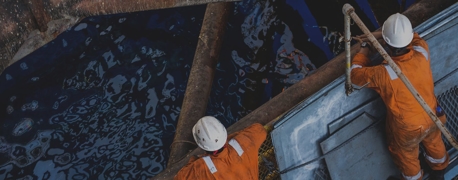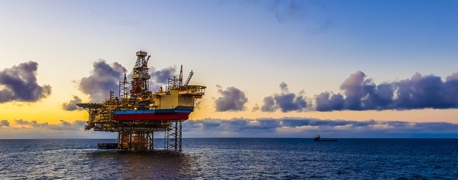Wind Turbines and Wind Farms: Everything You Need to Know

In a move toward cleaner, renewable energy, states such as Texas, New York, New Jersey, Massachusetts, and Rhode Island have made substantial commitments to developing wind-based energy infrastructure. Propelled by the Biden administration’s goal of generating 30 gigawatts of energy from offshore wind by 2030, we are on the brink of a wind energy boom.
This ambition doesn’t come without economic benefits. Wind energy expansion is estimated to create 77,000 jobs and foster the establishment of 5–10 new manufacturing plants, requiring a $12 billion investment. Just a few turbines can generate over 300 construction jobs, paving the way for opportunities for ironworkers, painters, service technicians, and many more.
The Reality of Working on a Wind Turbine
But what does it mean to work on an offshore wind turbine?
For starters, employees are working about 100 meters in the air, frequently climbing ladders and dealing with heavy equipment. The environment is fairly harsh: workers must handle extreme weather conditions and higher risks of transportation accidents since boats and helicopters are the primary means of reaching the turbines.
The life of a service technician involves replacing oil, filters, moving parts, and crawling in tight spaces, all the while savoring the breathtaking views—a perk of the job. However, the lack of basic amenities, like a bathroom on the turbine, implies additional challenges. Moreover, the workers are equipped with safety harnesses and immersion suits to prevent falls and hypothermia, respectively.
It can’t be overstated how physically demanding turbine work can be. There are elevators in some turbines, but for the most part, workers can end up climbing hundreds of meters a day—more if they need to use a bathroom, which requires climbing down to the bottom and up again.
There's a silver lining to the lack of amenities. Oil rig workers are often at sea for weeks, enduring rough weather most of the year. It’s a different story for the London Array wind farm (20km offshore) where workers return to the shore on a nightly basis, enjoying mostly regular working hours.
Wind energy will provide ideal jobs for people who have neither a fear of heights nor a fear of enclosed spaces. If you’re even a little claustrophobic, the narrow confines of a turbine may not be the workplace for you. That said, the jobs themselves pay well and provide an exciting environment for those who want a job at sea without weeks away from their families.
Why Offshore Wind Farms?
The question then arises: why not establish wind farms onshore? Offshore wind farms yield higher energy due to faster and more consistent winds at sea, which ensures stable output. Furthermore, with half of the US population living in coastal cities with high energy needs, the most plausible space for expansion is offshore.
These advantages present their own problems, though. Wind turbines require relatively shallow depths for stability, but much of the shoreline that would be developed into wind farms is not as shallow as a stationary wind turbine would require. Engineers around the world have solved this problem with floating turbines anchored in place, but because they’ll be dealing with high winds at sea almost constantly, this presents other challenges as well.
The Importance of Worker Safety During Expansion
Working on an offshore wind farm isn’t without its risks. The closest parallels to turbine work, in terms of hazards, might be a hybrid between construction work and working on an oil rig. Falling from a height can lead to bone fractures, spinal injuries, and organ damage. Transportation accidents are catastrophic at any job, but boat or helicopter accidents at sea are often fatal. On land, the mishandling of heavy equipment often causes injuries to the extremities, even amputation; there’s no reason to believe it wouldn’t be as true on a wind turbine.
That matters because if offshore wind energy is going to be in high demand, it’s vital to ensure workers are able to seek employment without unnecessary risk to their lives and livelihood.
With this impending boom comes the risk of rapid expansion, and previous energy booms has taught us that this can often lead to corner-cutting, especially when it comes to worker safety. While it is impossible to predict whether wind farms will lead to a high rate of worker injury, we do know that the industry is poised to explode, and in such situations, worker safety must be a priority to prevent potential harm.
Protection for Offshore Wind Farm Workers
Currently, offshore wind farm workers are classified as offshore workers. Therefore, they are protected under the Jones Act, the Longshore and Harbor Workers' Compensation Act (LHWCA), and general maritime law. We have first-hand experience with how effective these protections can be after an accident.
But while these laws provide some assurance, it is crucial to maintain a keen focus on worker safety as we venture into this new era of renewable energy.
The wind energy boom promises a cleaner future and economic growth, but it should not come at the cost of the well-being of those working tirelessly to make it a reality. The challenge lies in striking a balance between rapid development and maintaining the highest standards of safety, which will truly make this endeavor a success story for all.


